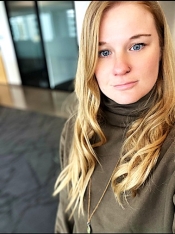ASU professor wins NIH Director’s New Innovator Award for research linking gene function to brain structure

An individual's experiences can change how the instructions written in our DNA are followed, a process called epigenetics. ASU Assistant Professor Candace Lewis has been fascinated by how epigenetic markers measured from blood and saliva might relate to brain structure and function. She was recently named a recipient of the NIH Director's New Innovator Award to pursue this research. Image by MV-Fotos/Pixabay
Life experiences alter us in many ways, including how we act and our mental and physical health. What we go through can even change how our genes work, how the instructions coded into our DNA are followed, in a process called epigenetics.
Researchers commonly search for markers of epigenetic activity by analyzing DNA from samples of blood and saliva — called the peripheral epigenome — even though what is found in blood or saliva might not be what is happening in brain cells.
Why epigenetic markers found in blood or saliva might relate to behavior or mental health outcomes has long fascinated Candace Lewis, an assistant professor in the School of Life Sciences and Department of Psychology at Arizona State University, because the brain is what is responsible for behavior.
Lewis plans to start untangling the relationship between the peripheral epigenome and behavior by studying identical twin participants who are part of the Arizona Twin Project, a long-term research study that follows twins in Arizona and New Mexico from infancy to early adolescence. Identical twins share the exact same DNA, which means any changes in gene expression are related to an individual’s life experiences, not differences in their DNA.
For her proposal to link the peripheral epigenome to brain structure in identical twins, Lewis was named one of the 2024 recipients of the National Institute of Health Director’s New Innovator Award. This grant only funds high-risk, high-reward research from “exceptionally creative scientists pursuing highly innovative research with the potential for broad impact,” according to the NIH.
Lewis described the award as a perfect fit for how she thinks about science and research.
“I think mental health research needs big, broad and complex pathways, and it is beyond an honor to receive an award that acknowledges both the importance of non-incremental science and lab’s goals as being up-and-coming and creative,” she said.
Mapping brain structure requires collecting magnetic resonance imaging (MRI), a process that is time-consuming for study participants. Lewis and the Arizona Twin Project have partnered with Translational Genomics Research Institute, which has a mobile MRI scanner that is part of the MindCrowd initiative to study aging and Alzheimer’s disease. The MRI scanner and researchers from Lewis’ lab will travel to participants’ homes to collect peripheral epigenome samples, map brain structure with MRI, and assess the physical and mental health of the identical twins.
More Science and technology

Breakthrough copper alloy achieves unprecedented high-temperature performance
A team of researchers from Arizona State University, the U.S. Army Research Laboratory, Lehigh University and Louisiana State University has developed a groundbreaking high-temperature copper alloy…

4 ASU researchers named senior members of the National Academy of Inventors
The National Academy of Inventors recently named four Arizona State University researchers as senior members to the prestigious organization.Professor Qiang Chen and associate professors Matthew…

Transforming Arizona’s highways for a smoother drive
Imagine you’re driving down a smooth stretch of road. Your tires have firm traction. There are no potholes you need to swerve to avoid. Your suspension feels responsive. You’re relaxed and focused on…


